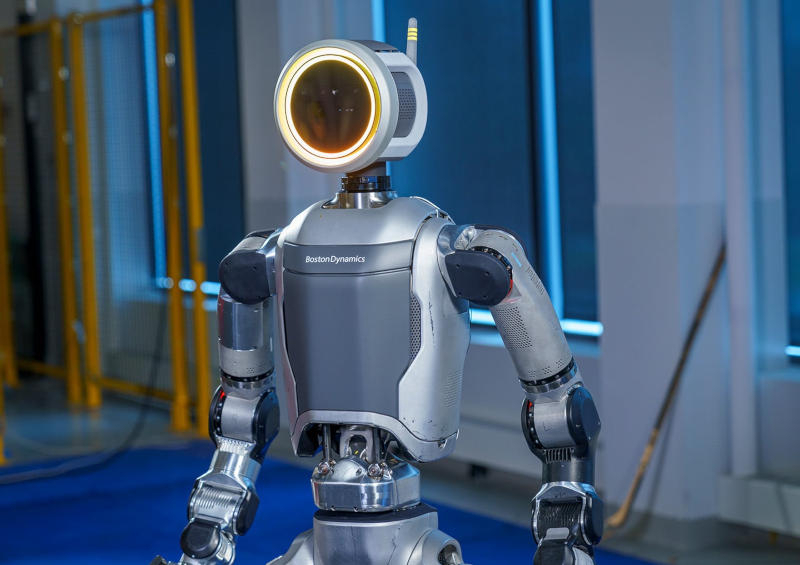Boston Dynamics and Toyota announced a partnership to develop a universal robotic anthropomorphic platform with elements of AI and the ability to learn. Similar to AI Large Language Models (LLMs), Toyota Institute (TRI) will implement its own Large Behavior Models (LBM) on the Atlas anthropomorphic robot platform. If successful, Toyota will begin distributing the adapted LBM model for robots from other companies.

Fully electric robot Atlas. Image Source: Boston Dynamics
Boston Dynamics’ anthropomorphic robot Atlas created a sensation and can be considered a benchmark in modern anthropomorphic robotics. It did not go into production, but this does not negate the development of many innovative solutions on it, which, one way or another, have found or will be reflected in the robots of other companies.
Earlier this year, Boston Dynamics stopped development of the original Atlas hydraulic robot and introduced an all-electric version. The electric Atlas received much more degrees of freedom for all limbs, which, as you might guess, in addition to significantly expanding functionality, made it much more difficult to control the platform.
The Toyota Institute has excelled at teaching robotic arms how to do things with their hands. The method is based on telepresence, when a human operator personally controls the manipulators, observing the process as if through the eyes of a robot. Then the system independently repeats manipulations with multiple interpretations – both correct and erroneous – and builds its future behavior on this array of data. This method allows AI platforms to independently learn even things that a human has not shown them, saving time on training.
Humanity has accumulated vast data in text form, which has given LLM models explosive growth in a matter of years. There is no similar volume of data on physical behavior. The Toyota Institute, among others, is creating such bases and is considered one of the leaders in this process. The combination of Boston Dynamics and the Toyota Institute to create the Atlas learning anthropomorphic platform promises to lead to the emergence of a universal humanoid robot that will be capable of performing a wide range of physical actions and tasks. Each of the partners is a leading expert in their field, so the likelihood of success is higher than ever.